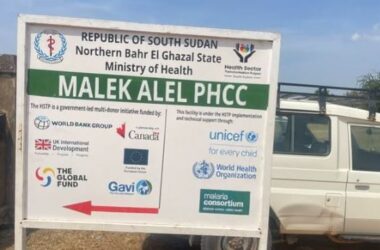By Kei Emmanuel Duku
South Sudan is winning the “war” against HIV, with significant drops in both prevalence and annual deaths, thanks to effective antiretroviral treatment (ART). However, the fight is far from over, as the country struggles to meet global targets due to a critical lack of government investment in its health system.
The country has seen a remarkable decline in HIV prevalence, dropping from 2.1% in 2022 to a projected 1.52% in 2025, according to Dr. Acol Ayor Dor, Deputy Chairperson of the South Sudan AIDS Commission.
Dr. Acol attributed the positive trend directly to the success of treatment programs, noting that the consistent use of ART is preventing people from succumbing to the virus.
“The reduction in the case means the country is on the positive trend in the fight against HIV,” Dr. Acol stated. “It shows that the treatment is working and we encourage the public to continue seeking treatment.”
She added that currently the total number of people living with the virus has dropped from 172,807 in 2022 to 152,125. Crucially, the annual HIV death rate has also fallen, standing at 5,055 for 2025, a significant drop from 8,010 in 2022.
The Deputy Chairperson highlighted the life-saving impact of ART, noting that the number of patients enrolling for treatment has steadily increased from 47,440 in 2022 to a projected 75,567 by 2025. This success extends to mothers, with ART enrollment rising from 4,204 to 4,625 over the same period.
Dr. Acol stressed the importance of continued treatment for viral suppression, which prevents transmission.
“What do you want? If parents want a negative child, go for the drugs. All the women, when you are pregnant, go and test yourself. So that you will have your child free from HIV,” she appealed.
Despite the treatment gains and an increase in ARV coverage services from 77% to 90%, South Sudan is lagging severely behind the global “Triple 95%” target set for 2030, which aims for 95% of all people living with HIV to know their status, 95% of those diagnosed to be on ART, and 95% of those on ART to have viral suppression.
According to data obtained from the commission, currently less than 55% of South Sudanese know their HIV status, falling 40% short of the first target. This is an improvement from 35% in 2022 but remains insufficient.
Dr. Acol concluded with a strong appeal to policymakers, urging them to fully fund the health sector to allow for universal testing, treatment enrollment, and community awareness campaigns to fight against stigma and harmful cultural beliefs.
“To achieve the first 95% target set in the fight against HIV/AIDS, government need to invest a lot to improve the health care systems in the country,” she asserted. “Let’s fund primary prevention, so our people will go for treatment.”
The leading health advocate also raised a devastating and urgent factor contributing to new HIV infections, rampant rape and Gender-Based Violence (GBV), particularly in rural areas.
She explained that forced sexual intercourse often results in physical injury, creating a high-risk route for transmission if the perpetrator is HIV positive.
“The relation between HIV and gender-based violence is extremely high in a situation like South Sudan… This violence against women must stop,” she said, pointing to Ruweng Administrative Area as having the highest number of cases of violence against women, driven by insecurity and displacement.
South Sudan’s health sector is heavily reliant on funding from external partners and international aid organizations.
The lack of consistent, robust domestic funding means that essential health services, including the purchase of life-saving drugs like ART, community awareness programs, and the maintenance of health facility infrastructure, are largely covered by foreign assistance. This dependence creates vulnerability and instability in long-term health planning.
The government’s minimal investment is a major barrier to achieving ambitious global health targets like the Triple 95% goal, forcing health commissions to continuously appeal for domestic budgetary allocation to sustain and expand vital health services beyond what external partners provide.




